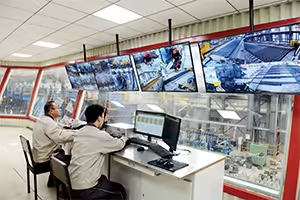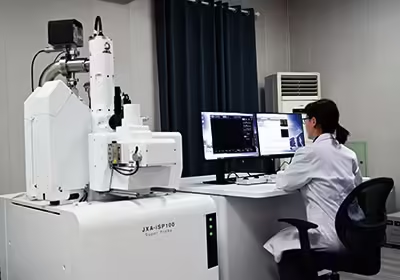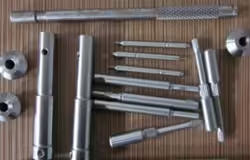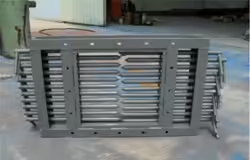
4 Major Risks of Ignoring Acero 4140 Specifications
Table of Contents
Introduction

Acero 4140, also known as AISI 4140 steel, is a versatile alloy steel recognized worldwide for its excellent balance of strength, toughness, wear resistance, and fatigue strength. This alloy finds applications across multiple industries, including automotive, aerospace, oil and gas, heavy machinery, and tool manufacturing. Due to its unique combination of chromium, molybdenum, manganese, and carbon, acero 4140 exhibits high hardenability and can be heat-treated to various hardness levels, making it suitable for critical components like shafts, gears, bolts, and structural parts.
However, the performance advantages of acero 4140 depend heavily on adherence to precise chemical and mechanical specifications. Ignoring these specifications during sourcing, processing, or application can cause catastrophic failures, increased costs, and safety hazards. In this blog, we will explore four major risks associated with disregarding acero 4140 specifications and provide practical advice on how to mitigate these issues.
Understanding these risks will empower engineers, manufacturers, and purchasing managers to make informed decisions that maximize the reliability and longevity of their acero 4140 components.
Risk 1: Reduced Mechanical Performance Due to Specification Non-Compliance
Acero 4140 is widely regarded for its balanced combination of strength, toughness, and wear resistance, making it indispensable in applications where mechanical reliability is critical. However, the exceptional mechanical properties of acero 4140 are highly dependent on strict adherence to its chemical composition and heat treatment specifications. Deviation from these standards can significantly impair the material’s performance, risking premature failure and costly downtime.
Variation in Chemical Composition
The chemical makeup of acero 4140 is meticulously formulated to achieve optimal performance. The typical ranges include 0.38-0.43% carbon, 0.75-1.00% manganese, 0.80-1.10% chromium, and 0.15-0.25% molybdenum. Each element plays a distinct role:
- Carbon: Primarily influences hardness and tensile strength. While higher carbon increases hardness, it also raises brittleness, making the steel susceptible to cracking under impact or cyclic loading.
- Chromium: Improves corrosion resistance and contributes to hardenability.
- Manganese and Molybdenum: Enhance toughness, wear resistance, and hardenability.
Ignoring these specifications or sourcing acero 4140 from suppliers who do not guarantee adherence to these chemical ranges introduces variability that can drastically affect performance. For example, excessive carbon beyond specification can cause the steel to become too brittle, leading to unexpected cracking under shock or fatigue conditions. On the other hand, carbon content below specification reduces hardness and strength, causing faster wear and deformation under heavy loads.
Improper Heat Treatment
Beyond chemical composition, heat treatment profoundly influences acero 4140’s mechanical behavior. The alloy is often supplied in various conditions such as annealed, normalized, quenched and tempered. Each process alters the microstructure and thus the hardness, tensile strength, ductility, and toughness of the steel.
- Annealing softens the steel to enhance machinability but reduces strength.
- Quenching rapidly cools the steel from a high temperature to harden it.
- Tempering follows quenching to reduce brittleness while maintaining hardness.
If the heat treatment process is neglected or performed incorrectly — for instance, insufficient tempering time or temperature — the resulting material may be either too soft, causing deformation and premature wear, or excessively brittle, prone to cracking and catastrophic failure under load.
Real-World Example
Consider a heavy machinery manufacturer that sourced acero 4140 shafts from an uncertified vendor lacking proper quality control. Post-manufacturing testing was skipped due to time constraints. Soon after assembly into heavy-duty equipment, the shafts exhibited fatigue cracks under cyclic stress, resulting in costly repairs and replacement. This real-world failure highlights how ignoring acero 4140 specifications—both chemical and heat treatment—can cause critical failures, safety hazards, and substantial financial loss.
Risk 2: Increased Risk of Machining and Fabrication Issues

Machining acero 4140 requires specialized knowledge of its hardness and toughness, which vary based on heat treatment and chemical composition. Failing to verify these parameters before fabrication can lead to severe manufacturing challenges.
Hardness Variability and Tool Wear
Annealed acero 4140, being softer (typically under 200 HB), is easier to machine and produces good surface finishes. However, quenched and tempered acero 4140 often has a hardness above 30 HRC, making it significantly tougher to cut.
If machinists ignore the steel’s heat treatment state and use tools or speeds appropriate only for softer steels, this can accelerate tool wear, cause frequent tool breakage, and damage workpieces. For example, carbide tools that are ideal for hardened acero 4140 require lower feed rates and appropriate cooling. Using high-speed steel tools or cutting parameters designed for mild steels will reduce tool life and increase production costs dramatically.
Dimensional and Surface Quality Problems
Ignoring steel specifications can also result in dimensional instability and poor surface quality. Residual stresses from improper heat treatment or fabrication steps may cause warping or distortion after machining or during service. Surface finish requirements are crucial in components such as gears and shafts where tight tolerances are necessary for proper assembly and performance.
For instance, a precision gear made from improperly treated acero 4140 may have surface cracks or roughness that causes accelerated wear and noisy operation.
Best Practices for Machining Acero 4140
- Confirm the heat treatment condition before machining to select appropriate tooling and parameters.
- Use carbide or coated carbide cutting tools designed for hard materials.
- Implement coolant systems to control temperature and reduce tool wear.
- For large or complex parts, pre-anneal acero 4140 to reduce hardness before machining, then re-heat treat as necessary.
- Follow recommended feed rates, cutting speeds, and depth of cut as per acero 4140 machining guidelines.
Risk 3: Unexpected Corrosion and Reduced Longevity
Although acero 4140 is not a stainless steel, its chromium content offers some corrosion resistance compared to carbon steels. However, without proper surface treatments or coatings specified for the application environment, acero 4140 components can corrode prematurely.
Impact of Ignoring Protective Coatings
Applications exposed to moisture, chemicals, or salt (such as marine or automotive environments) require surface protection like galvanization, painting, or plating. Neglecting these measures can cause rust formation, pitting, and eventual failure.
Case Study: Oil and Gas Industry
In the oil and gas sector, acero 4140 is often used for drill shafts and valves. Failure to apply specified corrosion-resistant coatings led to early equipment deterioration, resulting in costly replacements and safety risks. Compliance with corrosion protection specs is crucial in such harsh environments.
Prolonging Service Life
- Follow coating and treatment recommendations in acero 4140 specifications.
- Implement regular inspections and maintenance schedules.
- Consider stainless steel alternatives for highly corrosive settings.
Risk 4: Safety Hazards and Regulatory Non-Compliance
Using acero 4140 components that do not meet standards can pose significant safety risks to operators and equipment. Many industries mandate compliance with certifications such as ASTM, SAE, ISO, and CE for steel products.
Non-Compliance Consequences
- Failed safety audits leading to fines or shutdowns.
- Increased liability from accidents caused by component failure.
- Voided warranties and insurance claims.
Importance of Traceability
Maintaining material certification documents and traceability is essential. Ignoring acero 4140 specs often correlates with poor documentation, complicating quality control and legal compliance.
Mechanical Properties of Acero 4140: A Detailed Overview
To highlight the critical role of specifications, the table below summarizes typical mechanical and chemical properties of acero 4140 in its normalized condition:
| Property | Typical Range | Unit | Notes |
|---|---|---|---|
| Carbon (C) | 0.38 – 0.43 | % | Influences hardness & strength |
| Chromium (Cr) | 0.80 – 1.10 | % | Enhances corrosion resistance |
| Manganese (Mn) | 0.75 – 1.00 | % | Improves hardenability |
| Molybdenum (Mo) | 0.15 – 0.25 | % | Increases toughness |
| Tensile Strength | 95,000 – 108,000 | psi | Ultimate tensile strength |
| Yield Strength | 60,000 – 75,000 | psi | Elastic limit before deformation |
| Elongation | 20 – 30 | % | Ductility |
| Hardness (HRC) | 28 – 32 | HRC | Depends on heat treatment |
| Impact Toughness (Charpy) | 20 – 50 | Joules | Resistance to shock loading |
This table represents standard expected values. Deviations signal non-compliance that can cause the issues detailed in previous sections.
How to Avoid These Risks

1. Verify Material Certification and Supplier Reputation
Always purchase acero 4140 from certified suppliers who provide detailed mill test reports (MTRs) outlining chemical composition and mechanical testing. This practice ensures the steel meets industry and project standards.
2. Strictly Follow Heat Treatment Procedures
Consult technical datasheets and heat treatment guidelines. Common heat treatments include:
- Annealing for machinability.
- Quenching and tempering for strength.
- Normalizing for refined grain structure.
Incorrect heat treatment is a primary cause of failure in acero 4140 parts.
3. Use Appropriate Machining and Fabrication Techniques
Select cutting tools and machining parameters suited to acero 4140’s hardness and toughness. For welded components, ensure pre- and post-weld heat treatments to avoid cracking.
4. Implement Protective Measures Against Corrosion
Based on operating environment, apply coatings such as phosphate coatings, paint, or plating. Follow specification recommendations strictly.
5. Maintain Comprehensive Documentation and Traceability
Keep detailed records of material certificates, processing steps, and inspections. This practice is critical for quality assurance and regulatory compliance.
FAQ
What industries commonly use acero 4140?
Acero 4140 is widely used in automotive, aerospace, oil and gas, heavy machinery, and tooling industries due to its excellent mechanical properties.
Can acero 4140 be welded easily?
Yes, but welding requires careful preheating and post-weld heat treatment to avoid cracking, following the specifications strictly.
How does heat treatment affect acero 4140?
Heat treatment controls hardness, strength, and toughness. Improper heat treatment can lead to brittle or soft parts, unsuitable for intended use.
Is acero 4140 corrosion resistant?
It has moderate corrosion resistance but usually requires additional surface protection in harsh environments.
Where can I find official acero 4140 specifications?
Standards such as ASTM A29/A29M and SAE J404 define the chemical and mechanical properties of acero 4140.
Conclusion
Acero 4140’s widespread use in critical applications stems from its outstanding balance of mechanical strength, toughness, and wear resistance. However, these benefits only materialize if the steel meets rigorous specifications throughout sourcing, heat treatment, machining, and application.
Ignoring acero 4140 specifications can lead to:
- Reduced mechanical performance and early failure.
- Machining difficulties increasing costs.
- Premature corrosion.
- Serious safety hazards and regulatory non-compliance.
Manufacturers and engineers must prioritize adherence to acero 4140 specs, work with trusted suppliers, and apply correct processing techniques. Doing so not only ensures component longevity and safety but also enhances overall project success and reduces long-term expenses.






